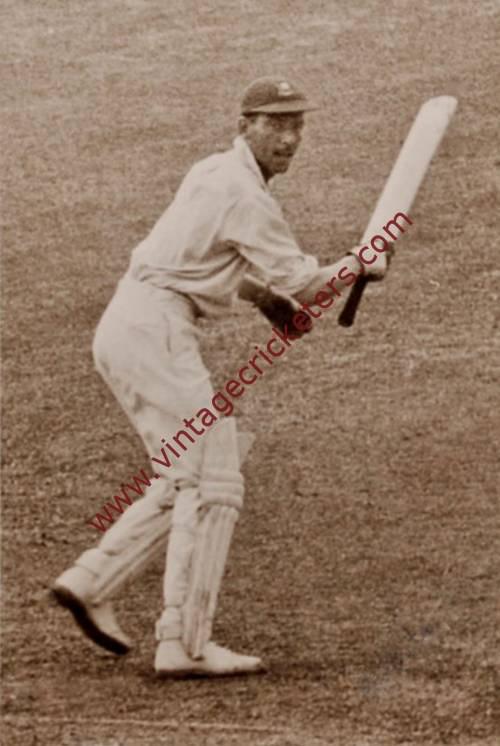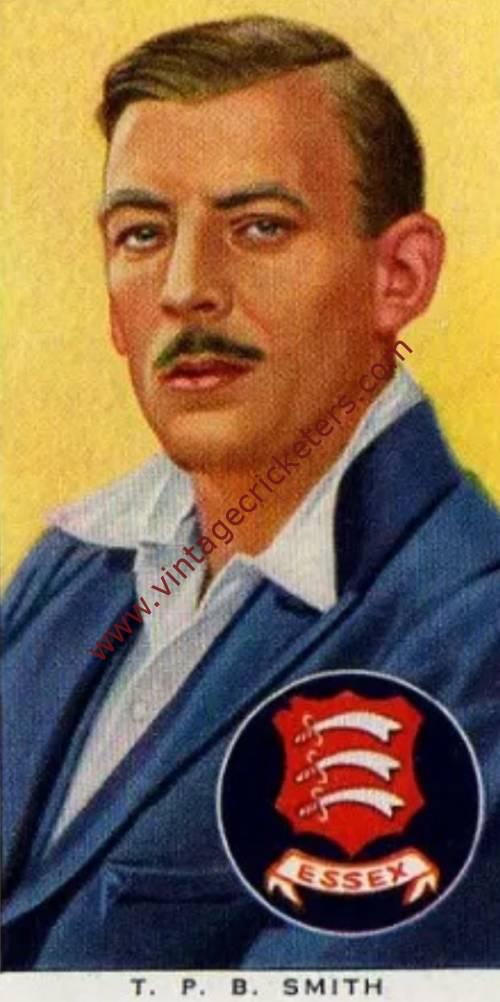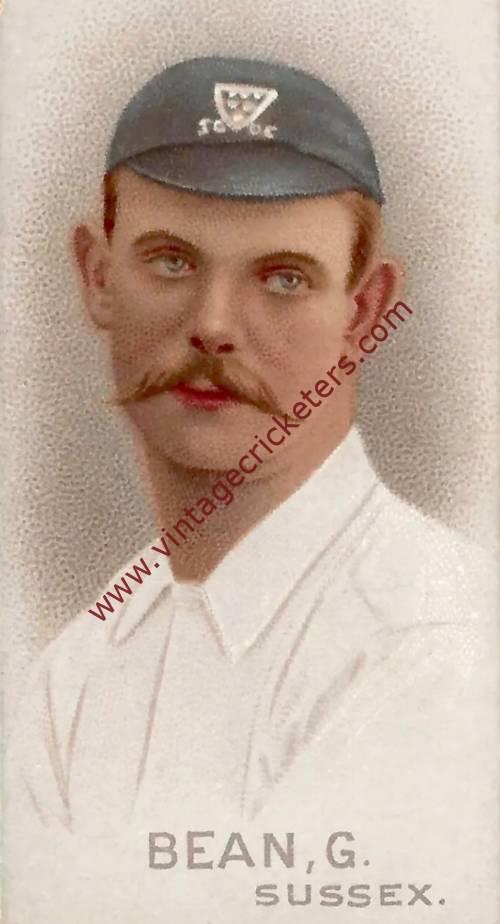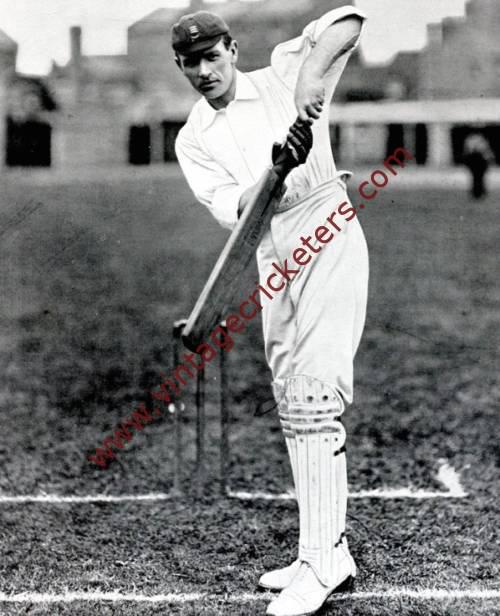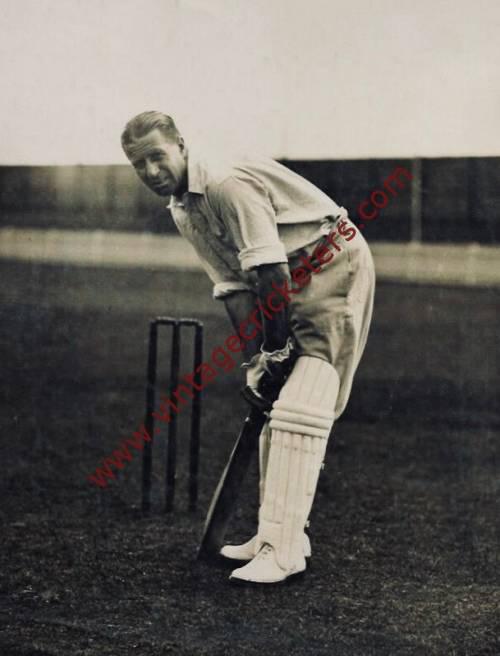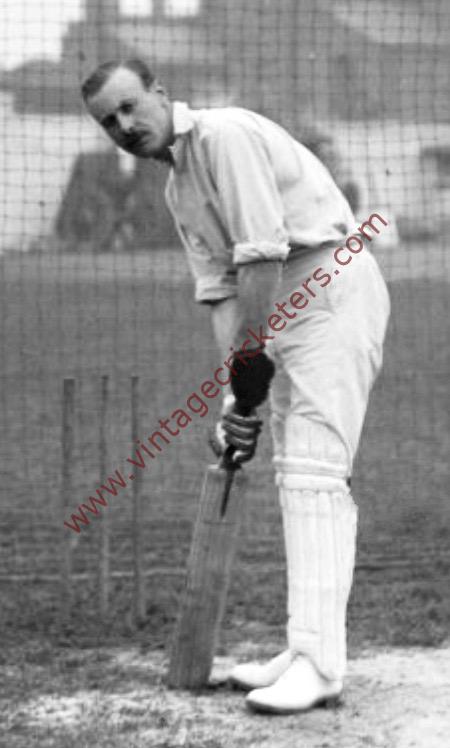Please choose your photo size from the drop down menu below.
If you wish your photo to be framed please select Yes.
Note: 16″x 20″not available in a frame.
Images can also be added to accessories. To order please follow these links
£8.95 – £49.95
Please choose your photo size from the drop down menu below.
If you wish your photo to be framed please select Yes.
Note: 16″x 20″not available in a frame.
Images can also be added to accessories. To order please follow these links
The maximum number of views of this element is reached.
Please contact the webmaster to enable unlimited views.
Ipswich, Suffolk born all rounder Peter Smith played for Essex from 1929 to 1951 but enjoyed many of his most notable successes after the Second World War. Smith was a leg-break and googly bowler and a lower order hitter of some style, and also holds the record for the highest tenth wicket partnership for the County. He first showed ability with the bat in 1934 when he scored 111 against Hampshire at Portsmouth, and in 1936 he made 105 out of an 8th wicket partnership of 214 with Jim Cutmore against the Indian tourists, an Essex record for the 8th wicket. Before the War he came to particular prominence with his bowling in 1937 when he took 13 Northamptonshire wickets at Colchester, 12 Kent wickets at Westcliff, 11 Worcestershire wickets at Worcester and 9-39 against Lancashire at Clacton among 155 wickets in the season. He never lost his length even when at times receiving heavy punishment, as when H.T. Bartlett hit him for 28 in an over in The Gentlemen v The Players match at Lord’s in 1938.
He served in the British Army during the Second World War, joining up in September 1939, and he was commissioned as a second lieutenant into the Essex Regiment in June 1940. Posted to the 2/4th Battalion, he served there for nearly three years before being sent to the Middle East in May 1943, becoming a staff officer at Combined Operations HQ at Alexandria.
Smith made his England debut against India at The Oval in August 1946, and he also took part in two Tests with Australia and one with New Zealand when a member of Wally Hammond’s M.C.C. team in 1946-47, although he didn’t do anything notable in Test cricket with just three wickets and a highest score of 24. Though he enjoyed little success generally on the 1946-47 tour, he did achieve one notable feat, his 9-121 against New South Wales at Sydney is still the best innings analysis by any M.C.C. bowler in Australia. He was one of the five Wisden Cricketers of the Year in 1947.
The summer of 1947 was a memorable one for Smith. In scoring 1,063 runs, average 23.66, and taking 172 wickets at 27.13 apiece, he completed the double for the only time in his career. Furthermore, he hit 163 against Derbyshire at Chesterfield, his highest career score and the highest first class innings in history by a batsman going in at No. 11 with the score at 199-9, he and F.H. Vigar, who made 114 not out put on 218 for the last wicket, which remains a record for Essex. The partnership is one of only eleven of more than 200 runs for the last wicket in the whole of first class cricket.
On three other occasions he dismissed nine batsmen in an innings – for 97 runs against Middlesex at Colchester in 1947, when he returned match-figures of 16 for 215; for 117 against Nottinghamshire at Southend and 108 against Kent at Maidstone, both in 1948.
During his 465 match career he made 10,170 runs at average 17.98, with 8 centuries and 32 half centuries, and took 1,697 wickets, more than any other Essex bowler to this day, for 26.63 runs each. He also holds the County record for the highest number of wickets taken in a season, 172 in 1947. With his bowling he took five wickets in an innings on 122 occasions, and ten wickets or more in a match 28 times. He also took 345 catches in first class play.
Vintage Cricketers was founded in July 2019. There may be more photographs of this cricketer in the Vintage Cricketers library, which are due to be loaded in due course. In the meantime, please send a message to us using the contact form at the bottom left of this page and we can arrange to prepare and publish all images of this cricketer if you have a particular interest in him.
| Weight | N/A |
|---|
